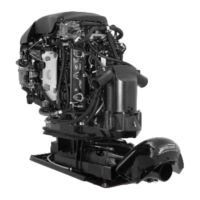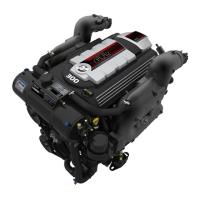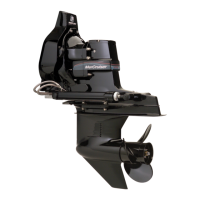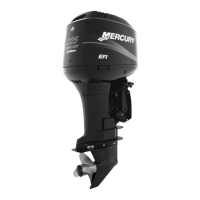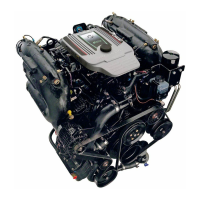TURBOCHARGER
SERVICE MANUAL NUMBER 22
90-860074--1 FEBRUARY 2002 Page 7C-9
Turbocharger
IMPORTANT: Before suspecting the turbocharger for engine operating problems, the
fuel injection system and engine mechanicals (valves, camshaft, etc.) must be in good
working order.
Testing Turbocharger Boost Pressure
CAUTION
Safety glasses, gloves and protective clothing should be worn while testing
turbocharger boost pressure, to protect against pressurized air being released by a
leak or rupture of a hose which could cause injury.
The following should be observed prior to testing:
• Engine should be at normal operating temperature.
• Engine air cleaner should be clean (or replaced if not clean).
1. Remove plug (screw with sealing washer) from intercooler housing as shown.
70904
73334
a
b
Typical
a-Plug (Screw With Sealing Washer)
b-Intercooler Housing
2. Install a 0-172.4 kPa (0-25 psi) pressure gauge into intercooler where plug was removed
in Step 1.
3. Start engine and watch pressure gauge.
• On All Engines: Maximum boost should be between 100 - 124 kPa (14.5 - 18 psi) at
3800 rpm.
Readings LOWER than specified above indicate possible turbocharger problems or boost
pressure control system problems, IF no engine problem exists, such as incorrect valve
clearance or a blockage in the exhaust system. Refer to appropriate sections in this manual,
including Troubleshooting. NO boost pressure would indicate a faulty turbocharger
requiring replacement.
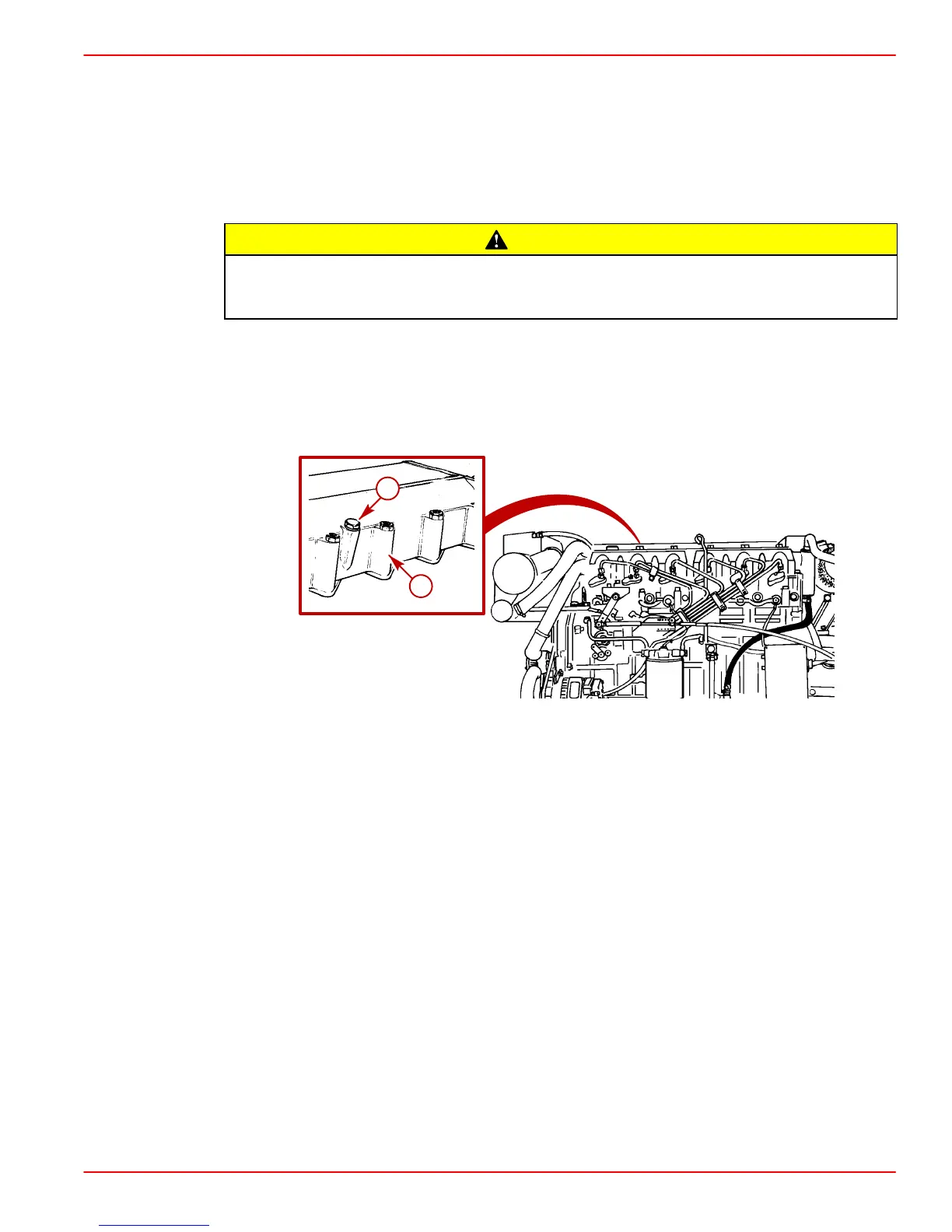